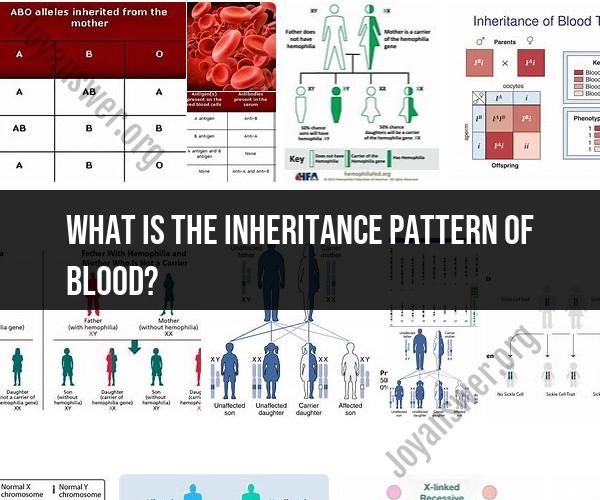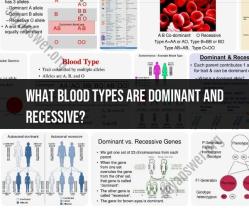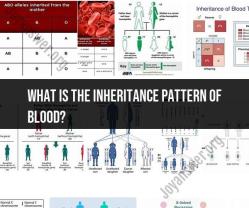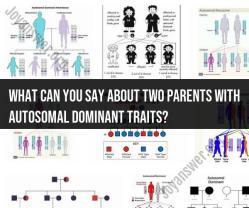What is the inheritance pattern of blood?
The inheritance pattern of blood types, specifically within the ABO blood group system, follows a classic Mendelian pattern of inheritance. The ABO blood group system is determined by the presence or absence of two antigens (A and B) on the surface of red blood cells and the presence of antibodies in the plasma. These antigens are encoded by specific alleles of a single gene, known as the ABO gene (located on chromosome 9 in humans).
The key alleles involved in the ABO blood group system are:
IA allele (A antigen): Individuals with at least one IA allele on their ABO gene will have the A antigen on their red blood cells. The IA allele is dominant.
IB allele (B antigen): Individuals with at least one IB allele on their ABO gene will have the B antigen on their red blood cells. The IB allele is also dominant.
i allele (O antigen): The i allele is recessive to both IA and IB alleles. Individuals with two i alleles (ii) do not have the A or B antigens on their red blood cells and are said to have blood type O.
The inheritance pattern can be summarized as follows:
- If an individual inherits an IA allele from one parent and an i allele from the other parent (IAi), they will have blood type A because the IA allele is dominant.
- If an individual inherits an IB allele from one parent and an i allele from the other parent (IBi), they will have blood type B because the IB allele is dominant.
- If an individual inherits an IA allele from one parent and an IB allele from the other parent (IAIB), they will have blood type AB because both A and B antigens are co-dominant.
- If an individual inherits two i alleles (ii), they will have blood type O because they do not have either A or B antigens.
The possible combinations of parental alleles and resulting blood types are as follows:
- IAIA or IAi → Blood Type A
- IBIB or IBi → Blood Type B
- IAIB → Blood Type AB
- ii → Blood Type O
It's important to note that this is a simplified overview of blood type inheritance within the ABO system. Other blood group systems, such as the Rh factor (positive or negative), also play a role in determining an individual's complete blood type. Additionally, there are multiple alleles within the ABO system, resulting in a variety of blood type variations and subtypes beyond the basic A, B, AB, and O blood types.






